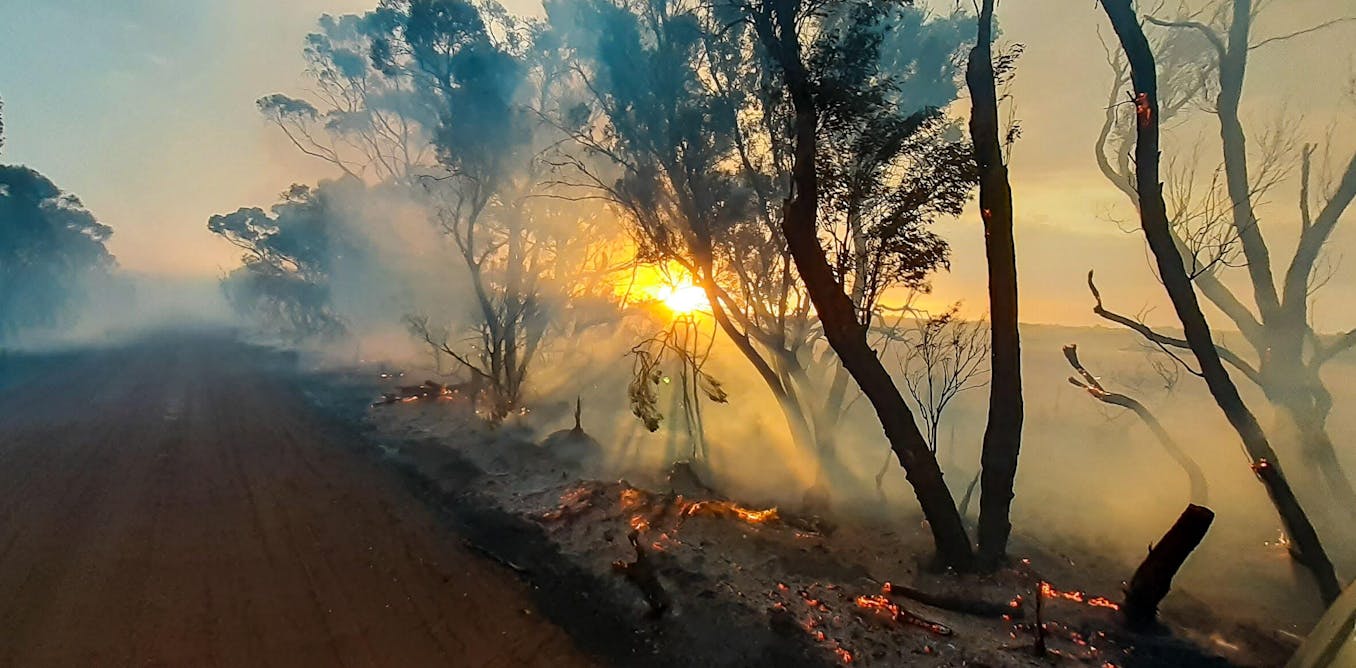Navigating the Requirements: Your Guide to Obtaining a BAL Report
Navigating the Requirements: Your Guide to Obtaining a BAL Report
Blog Article
The Relevance of Bushfire Monitoring in Fire Defense
In the world of fire protection, the value of reliable bushfire management can not be downplayed. As communities worldwide come to grips with raising instances of wildfires, the positive approach to avoiding and reducing these natural catastrophes through critical bushfire administration approaches has actually become a crucial aspect. Beyond the instant risk to human life and residential or commercial property, the interaction between bushfire administration and environmental conservation, neighborhood participation, and climate change positions intricate difficulties that need detailed options.
Value of Proactive Bushfire Prevention
Aggressive bushfire avoidance approaches are crucial in alleviating the ravaging effects of wildfires on communities and areas. One key aspect of proactive bushfire prevention is fuel management.
Enlightening the public on fire safety and security techniques and advertising community recognition about the significance of bushfire avoidance are vital components of proactive methods. Eventually, positive bushfire prevention plays a significant role in protecting areas and communities from the devastating influences of wildfires.
Duty of Neighborhood Engagement in Fire Defense
Involving the area in fire security initiatives is integral to improving the performance of positive bushfire prevention approaches. Community interaction plays an important duty in promoting a collective understanding of the threats posed by bushfires and the relevance of readiness procedures. By involving neighborhood homeowners, authorities can distribute crucial information on fire security techniques, discharge treatments, and early warning systems, empowering people to take proactive actions to protect their lives and residential properties.
By fostering a culture of readiness and cooperation, areas can strengthen their ability to react successfully to bushfire emergencies, reducing the impact on residential or commercial properties and lives. Inevitably, neighborhood involvement is a cornerstone of extensive fire security methods, stressing the relevance of cumulative action in securing susceptible locations from the threat of bushfires.
Relevance of Wildlife Conservation in Bushfire Monitoring
Preservation of wildlife plays an essential role in efficient bushfire monitoring methods, ensuring the protection of varied ecological communities and biodiversity in fire-prone areas. Wild animals preservation is essential as it adds to the overall strength of environments, helping in their ability to hold up against and recoup from the influence of bushfires. By saving environments and securing numerous types, the natural balance within these ecosystems is maintained, which is crucial for their long-term wellness and sustainability.
Additionally, wildlife preservation additionally assists in reducing the risk and strength of bushfires. Healthy and balanced communities with well-preserved wildlife populations can work as all-natural firebreaks, reducing the spread of fires and limiting their harmful potential (BMP). Particular animal types, like tunneling pets or birds that spread out seeds, play special roles in assisting or avoiding fires in the post-fire regeneration of habitats
Integrating wild animals conservation right into bushfire administration approaches is not only necessary for guarding biodiversity but also for promoting the overall health and wellness and strength of ecological communities despite enhancing fire threats.
Benefits of Strategic Fuel Decrease Programs
Purposefully executing read the article gas reduction programs is crucial in reducing the threat and impact of bushfires in fire-prone areas. These programs entail regulated burning, mechanical clearing up, and other techniques to reduce the quantity of combustible greenery offered to fuel wildfires. By purposefully decreasing fuel loads in crucial locations, such as near domestic neighborhoods or important infrastructure, the intensity and spread of bushfires can be dramatically lowered.
Among the main advantages of fuel reduction programs is the enhancement of general fire strength in a community. By producing strategic gas breaks and reducing the connection of plants, these programs aid to interrupt the course of a bushfire, making it less complicated for firefighters to snuff out the blaze and have. Additionally, fuel reduction programs can protect biodiversity by stopping excessively extreme fires that can ruin environments and intimidate wild animals populaces.
Additionally, these programs can additionally secure human lives and property by reducing the threat of tragic fires that position a significant risk to neighborhoods. Ultimately, tactical fuel decrease programs play an essential duty in positive bushfire monitoring and promoting a safer environment for both people and nature.
Impact of Environment Modification on Bushfire Danger

Higher temperatures lead to drier vegetation, making it much more at risk to ignition. Reduced rains in certain areas extends dry spell conditions, further increasing the flammability of the landscape. Additionally, the changing environment has modified wind patterns and climatic problems, bring about more unpredictable fire habits and quick fire spread.
As the environment remains to transform, the regularity and strength of bushfires are expected to rise, necessitating a adaptive and proactive approach to bushfire administration. Techniques need to progress to make up the changing danger landscape, incorporating environment projections and considering lasting strength in fire management preparation. Resolving the effect of climate adjustment on bushfire risk is important in developing efficient techniques to secure lives, building, and the setting.
Conclusion
In verdict, aggressive bushfire avoidance, community interaction, wildlife conservation, critical gas reduction programs, and consideration of environment adjustment are crucial elements in efficient fire security. By carrying out these approaches, we can much better handle bushfire dangers and safeguard both human lives and the setting. BAL Assessment. It is vital that stakeholders collaborate to prioritize these measures to lessen helpful resources the damaging influence of bushfires on communities and ecological communities

As the climate continues to alter, the frequency and intensity of bushfires are anticipated to climb, demanding a flexible and aggressive approach to bushfire monitoring.In conclusion, proactive bushfire avoidance, community engagement, wildlife conservation, calculated fuel reduction programs, and factor to consider of climate adjustment are important elements in efficient fire protection.
Report this page